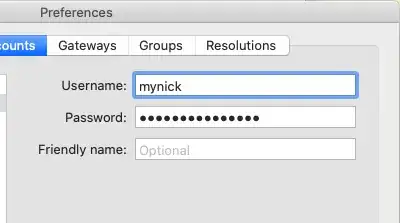Here is a Python 3 program that inserts username/password into RDP file and also creates LNK file for it (to drag to quick launch, for example). It is based on several existing solutions, credits for those goes to their authors.
import sys, os, getpass, subprocess
if (len(sys.argv) != 2):
print("\nRDPPassword is a Python 3 program that inserts username")
print("and password into existing RDP file and creates a LNK file")
print("that can be dragged to taskbar's QuickLaunch area.")
print("\nUSAGE: python %s <RDP file>\n" % os.path.basename(sys.argv[0]))
exit(1)
def InsertPassword(rdpfile, user, password):
fileIn = open(rdpfile, "r", encoding="'utf_16_le")
lines = fileIn.read().splitlines()
fileIn.close()
outLines = []
bPromptCredentials = False
bUsername = False
bPassword = False
for line in lines:
if line.startswith('promptcredentialonce:i:'):
outLines.append('promptcredentialonce:i:1')
bPromptCredentials = True
elif line.startswith('username:s:'):
outLines.append('username:s:%s' % user)
bUsername = True
elif line.startswith('password 51:b:'):
outLines.append('password 51:b:%s' % password)
bPassword = True
elif len(line)>0:
outLines.append(line)
if not bPromptCredentials:
outLines.append('promptcredentialonce:i:1')
if not bUsername:
outLines.append('username:s:%s' % user)
if not bPassword:
outLines.append('password 51:b:%s' % password)
fileOut = open(rdpfile, "w", encoding="utf_16_le")
for line in outLines:
#fileOut.write("%s%s" % (line, os.linesep))
fileOut.write("%s%s" % (line, '\n'))
#print("#%s#"%line)
fileOut.close()
def RunShell(command):
# pipes usage taken from: https://superuser.com/questions/1540516/how-do-i-execute-powershell-commands-with-pipes-in-python
PSEXE = r'C:\Windows\System32\WindowsPowerShell\v1.0\powershell.exe'
PSRUNCMD = "Invoke-Command -ScriptBlock "
process = subprocess.run([PSEXE, PSRUNCMD + "{" + command + "}"], stdout = subprocess.PIPE, stderr = subprocess.PIPE, universal_newlines = True)
#print("CMD", command)
#print("ERR", process.stderr)
#print("OUT", process.stdout)
return process.stdout
if not os.path.exists(sys.argv[1]):
print("\nFile '%s' not found.\n" % sys.argv[1])
exit(1)
if not ( (sys.argv[1].endswith(".rdp")) or (sys.argv[1].endswith(".RDP")) ):
print("\nFile '%s' not a RDP file.\n" % sys.argv[1])
exit(1)
print("\nInserting username/password into '%s'" % sys.argv[1])
username = input("Username: ")
#password = getpass.getpass("Password: ") #use this if you do not want the password to be seen while typing
password = input("Password: ")
# insert username/password into RDP file
# **************************************
# RDP password generation taken from: https://serverfault.com/questions/867467/rdp-file-with-embedded-password-asks-for-password
PassCmd = "('%s' | ConvertTo-SecureString -AsPlainText -Force) | ConvertFrom-SecureString;" % password
password = RunShell(PassCmd)
InsertPassword(sys.argv[1], username, password)
# create a LNK file for RDP
# *************************
print("\nCreating a LNK file for '%s'" % sys.argv[1])
# https://superuser.com/questions/298974/how-do-i-pin-a-remote-desktop-connection-to-the-taskbar
RunRdp = r'"%windir%\system32\mstsc.exe"'
RunArgs = "'\"%s\"'" % os.path.abspath(sys.argv[1])
# https://superuser.com/questions/392061/how-to-make-a-shortcut-from-cmd
LnkCmd = '$ws = New-Object -ComObject WScript.Shell; $s = $ws.CreateShortcut("%s"); $S.TargetPath = %s; $S.Arguments = %s; $S.Save()' % (sys.argv[1][:-3]+"lnk", RunRdp, RunArgs)
RunShell(LnkCmd)
print("\nDone.\n")
